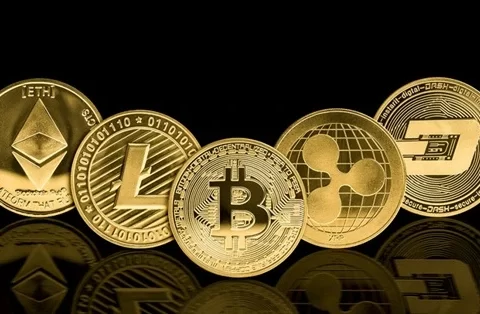
The growing influence of cryptocurrencies on global financial systems has spurred a series of debates, regulatory movements, and innovations, particularly in the United States. As Bitcoin, Ethereum, and other digital assets gain prominence, the question arises: will the United States develop a central bank digital currency (CBDC)? In this article, we explore the impact of cryptocurrencies on the American economy, the potential for a digital dollar, and the implications such a currency might hold for both the domestic and international financial landscape.
Cryptocurrencies and Their Economic Impact
The rise of cryptocurrencies in the United States has been marked by both enthusiasm and skepticism. On the one hand, digital currencies represent innovation, a potential new store of value, and a method for decentralized finance that could reshape traditional banking. On the other hand, concerns about regulatory oversight, volatility, and cybersecurity persist, leading to a cautious approach from policymakers.
As of 2024, cryptocurrencies have become a multi-trillion-dollar market globally, with a substantial portion of that activity occurring within the U.S. In particular, Bitcoin has been compared to gold as a store of value, while Ethereum has gained traction for its use in decentralized applications (dApps) and smart contracts. Investors, both institutional and retail, are increasingly allocating capital to digital assets, with some viewing it as a hedge against inflation and others seeking exposure to cutting-edge technologies.
However, the broader economic impact remains complex. While cryptocurrencies have created new industries—such as crypto exchanges, wallet providers, and blockchain-based startups—questions remain about their long-term viability in traditional financial systems. The decentralized nature of cryptocurrencies also poses challenges for the Federal Reserve and regulatory agencies, which are tasked with maintaining financial stability and overseeing monetary policy.
The Case for a Digital Dollar
Amid the rise of private cryptocurrencies, the concept of a U.S. central bank digital currency (CBDC)—often referred to as the “digital dollar”—has gained traction. A digital dollar would be a government-issued form of digital currency, fully backed by the U.S. central bank. Unlike Bitcoin or Ethereum, it would not be decentralized but instead function within the traditional banking system.
The introduction of a digital dollar would serve multiple purposes:
- Modernizing Payments: A digital dollar could streamline domestic and international payments, making them faster, cheaper, and more efficient. For instance, cross-border remittances could be settled instantly, bypassing the traditional banking system’s time-consuming processes and high fees.
- Enhancing Financial Inclusion: A CBDC could provide unbanked or underbanked populations with direct access to the digital economy. By offering a universally accepted digital form of money, the U.S. government could reduce reliance on private institutions and extend financial services to those who currently lack them.
- Preserving the Dollar’s Global Reserve Status: As countries like China, the European Union, and others explore their own CBDCs, there is concern that a lack of a U.S. digital currency could erode the dollar’s dominant position as the world’s reserve currency. A digital dollar could help reinforce the greenback’s role in international trade and finance.
- Combatting Illicit Activities: With proper regulatory frameworks, a digital dollar could enhance transparency in financial transactions and help prevent money laundering, tax evasion, and other illegal activities often associated with unregulated cryptocurrencies.
Challenges and Considerations
While the potential benefits of a digital dollar are clear, significant challenges and considerations must be addressed before its implementation.
- Privacy Concerns: One of the primary concerns surrounding CBDCs is the issue of privacy. Unlike decentralized cryptocurrencies that offer a degree of anonymity, a digital dollar would likely require robust monitoring and reporting systems. This could lead to increased government surveillance over individuals’ financial transactions, raising questions about the balance between security and personal privacy.
- Impact on Traditional Banking: A widely used CBDC could disrupt the traditional banking system, particularly in how banks operate as intermediaries. If individuals and businesses could hold digital dollars directly in accounts with the Federal Reserve, banks might see reduced demand for their deposit services. This could, in turn, affect their ability to lend, potentially destabilizing certain sectors of the economy.
- Cybersecurity Risks: With the introduction of a digital dollar, the Federal Reserve and other government entities would need to ensure the highest level of cybersecurity. Digital currencies, by nature, are attractive targets for cybercriminals. Any vulnerability in the system could have profound effects on both national and global economic stability.
- Monetary Policy Implications: The introduction of a digital dollar would have significant implications for monetary policy. Central banks could gain more precise control over the money supply, potentially implementing real-time adjustments to interest rates or stimulating the economy through direct digital transfers. However, such increased control could also introduce new risks, especially if mismanagement leads to unintended economic consequences.
International Context: A Race Towards Digital Currencies
Globally, numerous central banks are actively researching and experimenting with CBDCs. China’s digital yuan is perhaps the most advanced, with pilot programs already underway in major cities. The European Central Bank is similarly exploring the creation of a digital euro, while countries like Sweden, Canada, and Japan have also launched CBDC initiatives.
The United States, in contrast, has taken a more cautious approach. The Federal Reserve has acknowledged the potential benefits of a digital dollar but has emphasized the need for a thorough analysis of the risks and trade-offs. In 2022, the Fed published a discussion paper on the topic, inviting public feedback on the potential for a U.S. CBDC. The central bank continues to assess its options, recognizing that any decision will have significant ramifications for both the domestic economy and the global financial system.
Conclusion: A Digital Dollar in the Making?
As the cryptocurrency ecosystem evolves and other nations press forward with digital currency development, the United States finds itself at a crossroads. The growing popularity of decentralized digital assets has made it clear that the future of money is changing, and the American economy must adapt.
The creation of a digital dollar could offer profound benefits, from enhancing financial inclusion and improving payment systems to safeguarding the U.S. dollar’s status as the world’s reserve currency. However, careful consideration must be given to the potential risks, including privacy concerns, banking sector disruptions, and cybersecurity threats.
As policymakers and the Federal Reserve continue to evaluate the feasibility of a CBDC, it is clear that the conversation surrounding digital currencies is far from over. The prospect of a digital dollar remains a topic of critical importance, one that could reshape not only the U.S. economy but the global financial landscape as well.
In the end, the future of cryptocurrency in the American economy may rest on finding the right balance between innovation and regulation, while maintaining the stability and security of the financial system. Whether or not a digital dollar comes to fruition, the momentum of the digital currency revolution is undeniable—and its impact on the American economy is already being felt.











